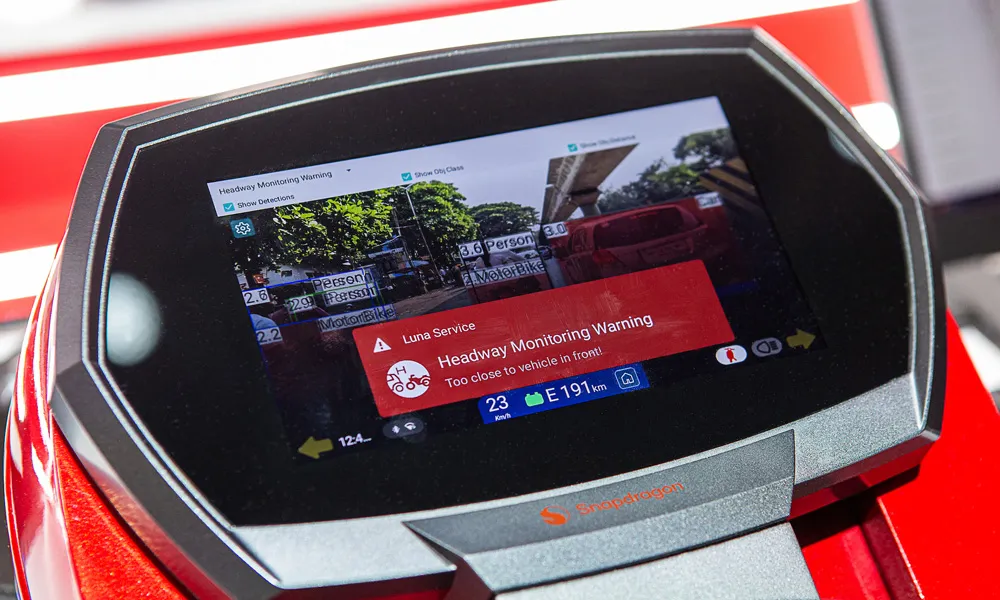According to a new research report by Berg Insight, the number of telematics service subscribers using embedded systems will grow at a compound annual growth rate (CAGR) of 36.4 per cent from 26.5 million subscribers at the end of 2015 to 170.2 million subscribers at the end of 2021.
In addition, Berg Insight forecasts that shipments of embedded car OEM telematics systems worldwide will grow from almost 13.8 million units in 2015 at a CAGR of over 25.1 per cent to reach 52.8 million units in 2021. In Eur
December 22, 2016
Read time: 2 mins
According to a new research report by 3849 Berg Insight, the number of telematics service subscribers using embedded systems will grow at a compound annual growth rate (CAGR) of 36.4 per cent from 26.5 million subscribers at the end of 2015 to 170.2 million subscribers at the end of 2021.
In addition, Berg Insight forecasts that shipments of embedded car OEM telematics systems worldwide will grow from almost 13.8 million units in 2015 at a CAGR of over 25.1 per cent to reach 52.8 million units in 2021. In Europe, uptake will increase rapidly due to the eCall initiative in the EU and ERA-GLONASS in the Eurasian Customs Union, scheduled to be fully implemented in 2018 and 2017 respectively.
Connected car services have evolved from being a differentiating factor to a common feature with a high attach rate among the premium car brands and are rapidly becoming increasingly common in mid-range vehicles. GM’s OnStar was launched 20 years ago and is today the market leader worldwide with more than 7.0 million paying subscribers and well above 10.0 million active users in total. BMW includes telematics hardware as a standard feature on all its cars sold in 43 markets worldwide and has the second largest user base with 3.4 million equipped vehicles. PSA is in third place and manages 1.8 million connected vehicles in Europe.
“Carmakers and car owners are starting to see the benefits of connected car services as a growing number of new vehicles are equipped with the technology”, said Jonas Wennermark, IoT/M2M Analyst at Berg Insight. “However, the really exciting development will happen when we move from telematics services as an add-on to actually design a vehicle with connectivity in mind. Starting with Tesla, several car makers have introduced vehicles with large dashboard touchscreens and the ability to receive over-the-air updates. “We have also seen Volvo and Bentley launch interesting concierge services for the premium segment, such as fuel-delivery to the customer’s vehicle”, added Wennermark.
In addition, Berg Insight forecasts that shipments of embedded car OEM telematics systems worldwide will grow from almost 13.8 million units in 2015 at a CAGR of over 25.1 per cent to reach 52.8 million units in 2021. In Europe, uptake will increase rapidly due to the eCall initiative in the EU and ERA-GLONASS in the Eurasian Customs Union, scheduled to be fully implemented in 2018 and 2017 respectively.
Connected car services have evolved from being a differentiating factor to a common feature with a high attach rate among the premium car brands and are rapidly becoming increasingly common in mid-range vehicles. GM’s OnStar was launched 20 years ago and is today the market leader worldwide with more than 7.0 million paying subscribers and well above 10.0 million active users in total. BMW includes telematics hardware as a standard feature on all its cars sold in 43 markets worldwide and has the second largest user base with 3.4 million equipped vehicles. PSA is in third place and manages 1.8 million connected vehicles in Europe.
“Carmakers and car owners are starting to see the benefits of connected car services as a growing number of new vehicles are equipped with the technology”, said Jonas Wennermark, IoT/M2M Analyst at Berg Insight. “However, the really exciting development will happen when we move from telematics services as an add-on to actually design a vehicle with connectivity in mind. Starting with Tesla, several car makers have introduced vehicles with large dashboard touchscreens and the ability to receive over-the-air updates. “We have also seen Volvo and Bentley launch interesting concierge services for the premium segment, such as fuel-delivery to the customer’s vehicle”, added Wennermark.







